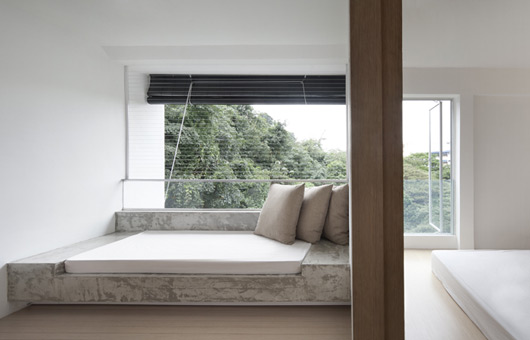What we love most about this home: The amazing transformation into a spacious, light-filled home.
The details:
Architect: Desmond Ong
Photographer: Jeremy San
Location: Singapore
When this beautiful apartment landed in our inbox, we knew it was something we had to share. It’s the Singapore home of Architect Desmond Ong and shows that space and light can be injected into almost any home, and that apartment living doesn’t have to mean unimaginative.
We caught up with Desmond to learn more about the home he designed for himself and his family…
Could you tell us a little about the history of the apartment?
It’s an old 3-bedroom government-built flat that’s around 34 years old. The structure’s still good though. We’re probably the third or fourth owners that have put up residence here, but that’s not clear.
However, what we do know is that we fell in love with the green that surrounded it on both sides, which it opens out to.
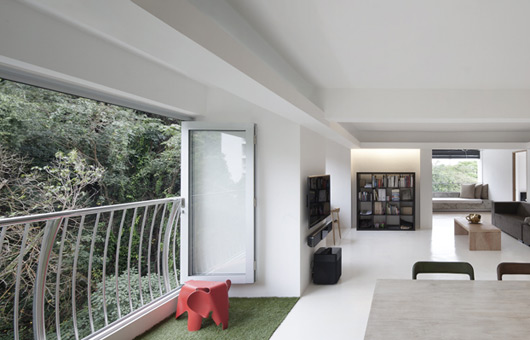
What have you done to increase the sense of space and what elements have you changed from the original layout?
Oh, a lot! Hopefully you can probably make out from the original photos that it was completely gutted sparing a few walls. I took out an entire bedroom which opened up the living area, and it brought about a very open sense of space.
Even though we have 2 young children, I still went ahead because I feel that it’s healthier to be lounging in the living than cooped up in a typical air-conditioned bedroom, which is often the case in hot humid Singapore.
All the windows were changed, the “balcony” area, which originally had normal sliding doors, was replaced with bi-fold doors which then allows the full expanse of the green outside to be brought in.
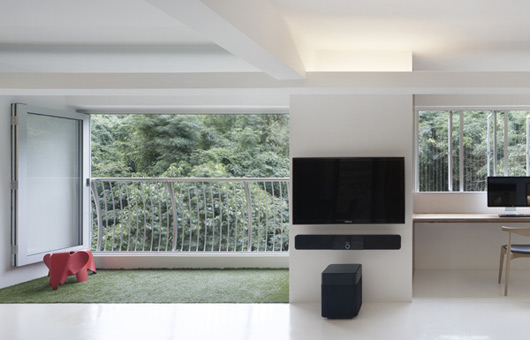
The daybed area had the original windows ripped out and left like that to allow maximum cross ventilation and gentle breezes to waft through the flat. Rain is screened off easily with traditional bamboo blinds that rustle with fierce winds during the tropical monsoons, yet without a drop entering.
In other words the place is never ever closed off to the outside. This was an experiment in the making and the result was fully obtainable with a little bit of thought.
What’s it like to live here?
It’s great to be able to come home to truly relaxing space after a stressful day at work. Hearing the sounds of crickets or frogs (when wet) is another rare experience in an urbanised jungle. All the creature comforts are there, all the visual comforts are there too.
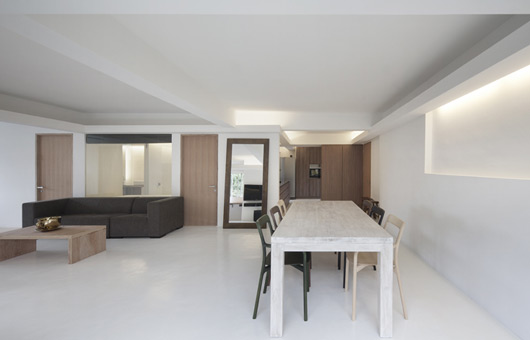
Was it an expensive refurbishment?
Believe it or not it was done on the cheap. The focus of the cost was in the furniture – mostly original or custom pieces, because resting in quality stuff provided a certain strong, confident feel to tactility.
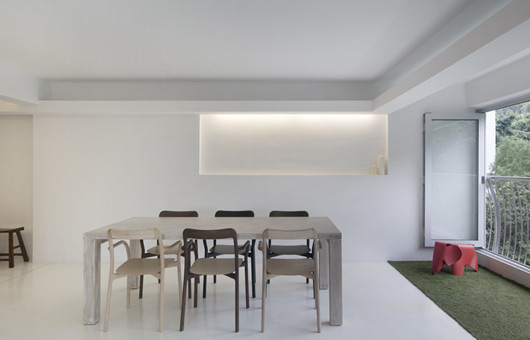
I believe a design-centred home should include at least some items designed thoughtfully and carefully by designers who had put great effort in creating marvelous and beautiful products.
For example the Branca chairs that we ordered directly from Mattiazzi were designed by UK based Industrial Facility, computerized CNC’d into parts, assembled and hand finished by local artisans in Italy, a remarkable and efficient process that still stays competitive in this tight economic climate.
What specific things do you like most about the apartment?
We love the location, since then, we’ve spotted little creatures that city slickered Singaporeans rarely have a glimpse of – a little bird’s nest here, a tiny squirrel there, an owl swooping past, a bat at dusk – all while enjoying a cappuccino from the comfort of our dining.
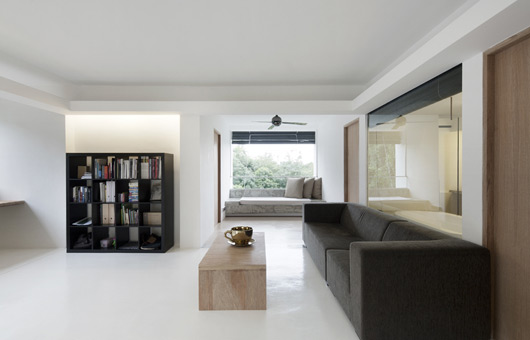
Can you tell us a little about the materials used?
We have painted floors in place of oft expensively imported marble from Greece, economical engineered timber flooring (greener as less hardwood is used), raw concrete elements (labour is not as high as the Westernised nations), low cost tiles from nearby Malaysia, (but set to look like luxurious stone by pulling the tiles apart), and simple walnut flavoured laminates for joinery.

All the doors were left in their original raw plywood state coming straight off the back of the truck, unvarnished, unpainted.
There was regulatory requirement that wiring couldn’t be buried within walls of the place, hence there’s the floating box that acts both as the lighting and the running of the wires without having to lower the entire ceiling.
Desmond Ong
[lg_folder folder=”stories/2011/march-11/live/singapore/singapore” display=”slide”]

